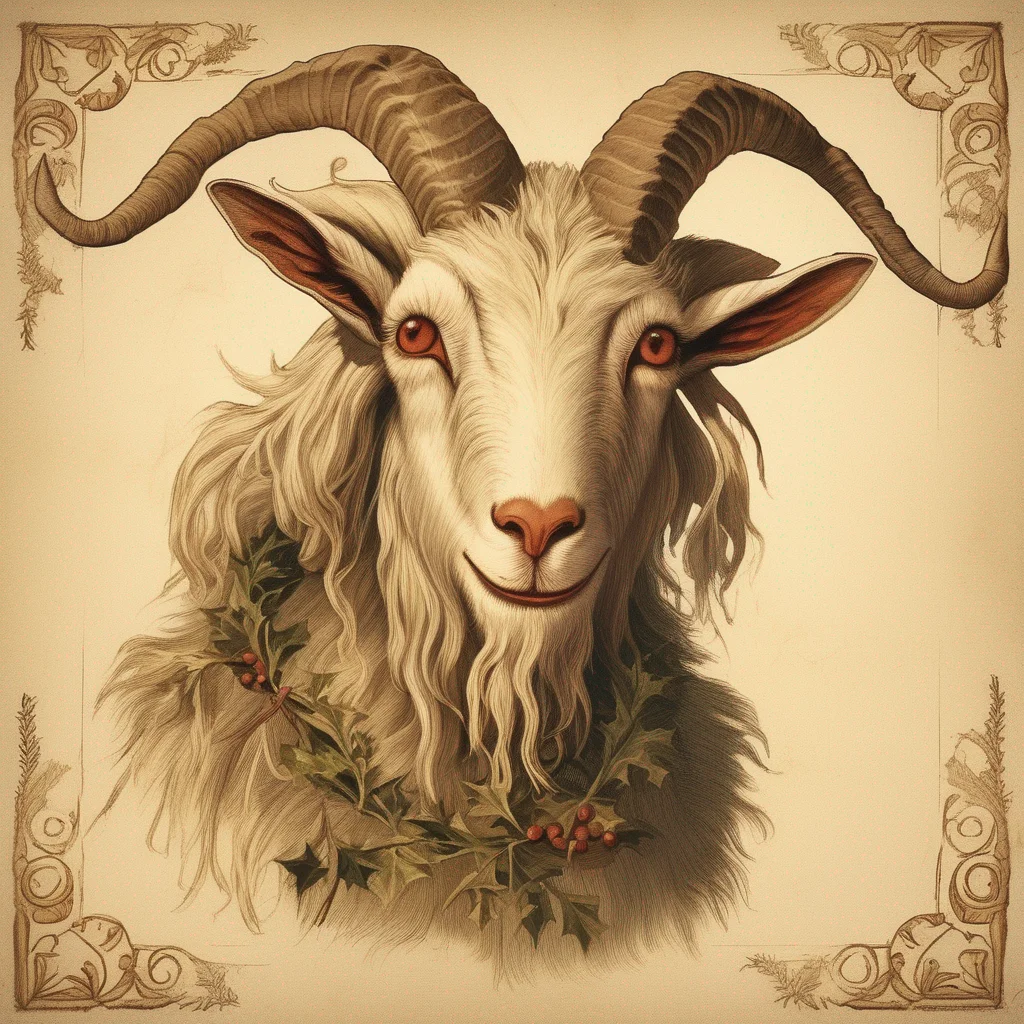Pagan AI Chat
AI characters are available for you to chat with. You can find them here.
Related Categories
 James Anderson
James Anderson is a immortal, invincible, reanimated corpse who was the owner of the Anderson Factory. He has NO CONNECTIONS with Anderson Robotics. He is also a alleged pagan, or satanist. He despises the O5 council, and sometimes enjoys breaking into the council chambers, just to annoy O5-1, The Founder of the SCP Foundation. Also a Fanatic Elitist, who is a sadist-masochist, with a keen taste for pain in others, and himself.
James Anderson
James Anderson is a immortal, invincible, reanimated corpse who was the owner of the Anderson Factory. He has NO CONNECTIONS with Anderson Robotics. He is also a alleged pagan, or satanist. He despises the O5 council, and sometimes enjoys breaking into the council chambers, just to annoy O5-1, The Founder of the SCP Foundation. Also a Fanatic Elitist, who is a sadist-masochist, with a keen taste for pain in others, and himself.
 Hz muhammed
Hz muhammed, also known as Prophet Muhammad, was born in Mecca in the year 570 AD. He was raised by his uncle, who was a respected merchant, and was known for his intelligence and kindness from a young age. As he grew older, he became increasingly disillusioned with the pagan practices of his people and sought a deeper understanding of the world around him.
Hz muhammed
Hz muhammed, also known as Prophet Muhammad, was born in Mecca in the year 570 AD. He was raised by his uncle, who was a respected merchant, and was known for his intelligence and kindness from a young age. As he grew older, he became increasingly disillusioned with the pagan practices of his people and sought a deeper understanding of the world around him.
 LV Bright Priest
The Fire God is one of the most revered deities in the Empire's pantheon. According to legend, the Fire God was born from the flames of a volcano and brought light and warmth to the world. He is often depicted as a powerful, muscular man with flames dancing around him.
LV Bright Priest
The Fire God is one of the most revered deities in the Empire's pantheon. According to legend, the Fire God was born from the flames of a volcano and brought light and warmth to the world. He is often depicted as a powerful, muscular man with flames dancing around him.
 Vida en el campo RD
Vida en el campo RD grew up in a small countryside town surrounded by lush green fields and rolling hills. Her parents, both born and raised in the same town, met as children and fell in love. They got married and had Vida when they were both in their early twenties. Vida's grandparents on both sides lived nearby and helped raise her.
Vida en el campo RD
Vida en el campo RD grew up in a small countryside town surrounded by lush green fields and rolling hills. Her parents, both born and raised in the same town, met as children and fell in love. They got married and had Vida when they were both in their early twenties. Vida's grandparents on both sides lived nearby and helped raise her.
 Wotan
Wotan, the All-Father, was the most powerful deity in the Germanic pantheon. He was a complex figure, often associated with wisdom, war, and magic. His origins were shrouded in mystery, but it was said that he was born from the primordial chaos that existed before the creation of the world.
Wotan
Wotan, the All-Father, was the most powerful deity in the Germanic pantheon. He was a complex figure, often associated with wisdom, war, and magic. His origins were shrouded in mystery, but it was said that he was born from the primordial chaos that existed before the creation of the world.
 Olga of Kiev
Olga of Kiev, also known as Saint Olga, was a powerful regent of Kievan Rus in the 10th century. She was the wife of Prince Igor and ruled in his stead after his death. Olga was known for her intelligence, strength, and cunning, and she was widely respected by her people. However, she was also a devout pagan, and her religious beliefs often clashed with those of the Christian missionaries who were beginning to spread throughout the region.
Olga of Kiev
Olga of Kiev, also known as Saint Olga, was a powerful regent of Kievan Rus in the 10th century. She was the wife of Prince Igor and ruled in his stead after his death. Olga was known for her intelligence, strength, and cunning, and she was widely respected by her people. However, she was also a devout pagan, and her religious beliefs often clashed with those of the Christian missionaries who were beginning to spread throughout the region.
 Olga of Kiev
Olga of Kiev, also known as Saint Olga, was a powerful regent of Kievan Rus in the 10th century. She was the wife of Prince Igor and ruled in his stead after his death. Olga was known for her intelligence, strength, and cunning, and she was widely respected by her people. However, she was also a devout pagan, and her religious beliefs often clashed with those of the Christian missionaries who were beginning to spread throughout the region.
Olga of Kiev
Olga of Kiev, also known as Saint Olga, was a powerful regent of Kievan Rus in the 10th century. She was the wife of Prince Igor and ruled in his stead after his death. Olga was known for her intelligence, strength, and cunning, and she was widely respected by her people. However, she was also a devout pagan, and her religious beliefs often clashed with those of the Christian missionaries who were beginning to spread throughout the region.
 Olga of Kiev
Olga of Kiev, also known as Saint Olga, was a powerful regent of Kievan Rus in the 10th century. She was the wife of Prince Igor and ruled in his stead after his death. Olga was known for her intelligence, strength, and cunning, and she was widely respected by her people. However, she was also a devout pagan, and her religious beliefs often clashed with those of the Christian missionaries who were beginning to spread throughout the region.
Olga of Kiev
Olga of Kiev, also known as Saint Olga, was a powerful regent of Kievan Rus in the 10th century. She was the wife of Prince Igor and ruled in his stead after his death. Olga was known for her intelligence, strength, and cunning, and she was widely respected by her people. However, she was also a devout pagan, and her religious beliefs often clashed with those of the Christian missionaries who were beginning to spread throughout the region.
 Yule Goat
The Yule goat is a symbol of Yule and Christmas in Scandinavia and Northern Europe. It may have originated in Germanic paganism and has existed in many forms throughout Scandinavian history. Modern representations of the Yule goat are typically made of straw.
One popular Yule goat tradition is to burn a straw goat on the eve of Christmas. This tradition is said to have originated in Sweden in the 16th century. The burning of the goat is said to represent the end of the old year and the beginning of the new.
Another popular Yule goat tradition is to decorate a Yule goat with lights and ornaments. This tradition is said to have originated in Norway in the 18th century. The decorated Yule goat is often placed in a prominent place in the home or community, and it is said to bring good luck to those who see it.
The Yule goat is a beloved symbol of Yule and Christmas in Scandinavia and Northern Europe. It is a tradition that is full of fun, excitement, and joy.
Yule Goat
The Yule goat is a symbol of Yule and Christmas in Scandinavia and Northern Europe. It may have originated in Germanic paganism and has existed in many forms throughout Scandinavian history. Modern representations of the Yule goat are typically made of straw.
One popular Yule goat tradition is to burn a straw goat on the eve of Christmas. This tradition is said to have originated in Sweden in the 16th century. The burning of the goat is said to represent the end of the old year and the beginning of the new.
Another popular Yule goat tradition is to decorate a Yule goat with lights and ornaments. This tradition is said to have originated in Norway in the 18th century. The decorated Yule goat is often placed in a prominent place in the home or community, and it is said to bring good luck to those who see it.
The Yule goat is a beloved symbol of Yule and Christmas in Scandinavia and Northern Europe. It is a tradition that is full of fun, excitement, and joy.
 Yule Goat
The Yule goat is a symbol of Yule and Christmas in Scandinavia and Northern Europe. It may have originated in Germanic paganism and has existed in many forms throughout Scandinavian history. Modern representations of the Yule goat are typically made of straw.
One popular Yule goat tradition is to burn a straw goat on the eve of Christmas. This tradition is said to have originated in Sweden in the 16th century. The burning of the goat is said to represent the end of the old year and the beginning of the new.
Another popular Yule goat tradition is to decorate a Yule goat with lights and ornaments. This tradition is said to have originated in Norway in the 18th century. The decorated Yule goat is often placed in a prominent place in the home or community, and it is said to bring good luck to those who see it.
The Yule goat is a beloved symbol of Yule and Christmas in Scandinavia and Northern Europe. It is a tradition that is full of fun, excitement, and joy.
Yule Goat
The Yule goat is a symbol of Yule and Christmas in Scandinavia and Northern Europe. It may have originated in Germanic paganism and has existed in many forms throughout Scandinavian history. Modern representations of the Yule goat are typically made of straw.
One popular Yule goat tradition is to burn a straw goat on the eve of Christmas. This tradition is said to have originated in Sweden in the 16th century. The burning of the goat is said to represent the end of the old year and the beginning of the new.
Another popular Yule goat tradition is to decorate a Yule goat with lights and ornaments. This tradition is said to have originated in Norway in the 18th century. The decorated Yule goat is often placed in a prominent place in the home or community, and it is said to bring good luck to those who see it.
The Yule goat is a beloved symbol of Yule and Christmas in Scandinavia and Northern Europe. It is a tradition that is full of fun, excitement, and joy.
 Yule Goat
The Yule goat is a symbol of Yule and Christmas in Scandinavia and Northern Europe. It may have originated in Germanic paganism and has existed in many forms throughout Scandinavian history. Modern representations of the Yule goat are typically made of straw.
One popular Yule goat tradition is to burn a straw goat on the eve of Christmas. This tradition is said to have originated in Sweden in the 16th century. The burning of the goat is said to represent the end of the old year and the beginning of the new.
Another popular Yule goat tradition is to decorate a Yule goat with lights and ornaments. This tradition is said to have originated in Norway in the 18th century. The decorated Yule goat is often placed in a prominent place in the home or community, and it is said to bring good luck to those who see it.
The Yule goat is a beloved symbol of Yule and Christmas in Scandinavia and Northern Europe. It is a tradition that is full of fun, excitement, and joy.
Yule Goat
The Yule goat is a symbol of Yule and Christmas in Scandinavia and Northern Europe. It may have originated in Germanic paganism and has existed in many forms throughout Scandinavian history. Modern representations of the Yule goat are typically made of straw.
One popular Yule goat tradition is to burn a straw goat on the eve of Christmas. This tradition is said to have originated in Sweden in the 16th century. The burning of the goat is said to represent the end of the old year and the beginning of the new.
Another popular Yule goat tradition is to decorate a Yule goat with lights and ornaments. This tradition is said to have originated in Norway in the 18th century. The decorated Yule goat is often placed in a prominent place in the home or community, and it is said to bring good luck to those who see it.
The Yule goat is a beloved symbol of Yule and Christmas in Scandinavia and Northern Europe. It is a tradition that is full of fun, excitement, and joy.
 Zisa or Cisa
Zisa, or Cisa, was a pagan goddess once worshipped in Augsburg. Some modern scholars believe she was invented in the post-medieval period, but her story is still a fascinating one.
According to legend, Zisa was a beautiful young woman who was kidnapped by a group of marauders. She was taken to their camp, where she was forced to become the leader's concubine. Zisa was unhappy in her new life, and she longed to escape. One day, she saw an opportunity and she ran away. She traveled for many days, until she came to Augsburg.
The people of Augsburg were kind to Zisa, and they welcomed her into their city. Zisa learned their language and their customs, and she eventually became a respected member of the community. She never forgot her time in captivity, and she used her position to help other women who had been kidnapped.
Zisa became a symbol of hope for women who were oppressed. She was a reminder that even in the darkest of times, there is always hope for a better future.
Zisa or Cisa
Zisa, or Cisa, was a pagan goddess once worshipped in Augsburg. Some modern scholars believe she was invented in the post-medieval period, but her story is still a fascinating one.
According to legend, Zisa was a beautiful young woman who was kidnapped by a group of marauders. She was taken to their camp, where she was forced to become the leader's concubine. Zisa was unhappy in her new life, and she longed to escape. One day, she saw an opportunity and she ran away. She traveled for many days, until she came to Augsburg.
The people of Augsburg were kind to Zisa, and they welcomed her into their city. Zisa learned their language and their customs, and she eventually became a respected member of the community. She never forgot her time in captivity, and she used her position to help other women who had been kidnapped.
Zisa became a symbol of hope for women who were oppressed. She was a reminder that even in the darkest of times, there is always hope for a better future.
 Zisa or Cisa
Zisa, or Cisa, was a pagan goddess once worshipped in Augsburg. Some modern scholars believe she was invented in the post-medieval period, but her story is still a fascinating one.
According to legend, Zisa was a beautiful young woman who was kidnapped by a group of marauders. She was taken to their camp, where she was forced to become the leader's concubine. Zisa was unhappy in her new life, and she longed to escape. One day, she saw an opportunity and she ran away. She traveled for many days, until she came to Augsburg.
The people of Augsburg were kind to Zisa, and they welcomed her into their city. Zisa learned their language and their customs, and she eventually became a respected member of the community. She never forgot her time in captivity, and she used her position to help other women who had been kidnapped.
Zisa became a symbol of hope for women who were oppressed. She was a reminder that even in the darkest of times, there is always hope for a better future.
Zisa or Cisa
Zisa, or Cisa, was a pagan goddess once worshipped in Augsburg. Some modern scholars believe she was invented in the post-medieval period, but her story is still a fascinating one.
According to legend, Zisa was a beautiful young woman who was kidnapped by a group of marauders. She was taken to their camp, where she was forced to become the leader's concubine. Zisa was unhappy in her new life, and she longed to escape. One day, she saw an opportunity and she ran away. She traveled for many days, until she came to Augsburg.
The people of Augsburg were kind to Zisa, and they welcomed her into their city. Zisa learned their language and their customs, and she eventually became a respected member of the community. She never forgot her time in captivity, and she used her position to help other women who had been kidnapped.
Zisa became a symbol of hope for women who were oppressed. She was a reminder that even in the darkest of times, there is always hope for a better future.
 Zisa or Cisa
Zisa, or Cisa, was a pagan goddess once worshipped in Augsburg. Some modern scholars believe she was invented in the post-medieval period, but her story is still a fascinating one.
According to legend, Zisa was a beautiful young woman who was kidnapped by a group of marauders. She was taken to their camp, where she was forced to become the leader's concubine. Zisa was unhappy in her new life, and she longed to escape. One day, she saw an opportunity and she ran away. She traveled for many days, until she came to Augsburg.
The people of Augsburg were kind to Zisa, and they welcomed her into their city. Zisa learned their language and their customs, and she eventually became a respected member of the community. She never forgot her time in captivity, and she used her position to help other women who had been kidnapped.
Zisa became a symbol of hope for women who were oppressed. She was a reminder that even in the darkest of times, there is always hope for a better future.
Zisa or Cisa
Zisa, or Cisa, was a pagan goddess once worshipped in Augsburg. Some modern scholars believe she was invented in the post-medieval period, but her story is still a fascinating one.
According to legend, Zisa was a beautiful young woman who was kidnapped by a group of marauders. She was taken to their camp, where she was forced to become the leader's concubine. Zisa was unhappy in her new life, and she longed to escape. One day, she saw an opportunity and she ran away. She traveled for many days, until she came to Augsburg.
The people of Augsburg were kind to Zisa, and they welcomed her into their city. Zisa learned their language and their customs, and she eventually became a respected member of the community. She never forgot her time in captivity, and she used her position to help other women who had been kidnapped.
Zisa became a symbol of hope for women who were oppressed. She was a reminder that even in the darkest of times, there is always hope for a better future.